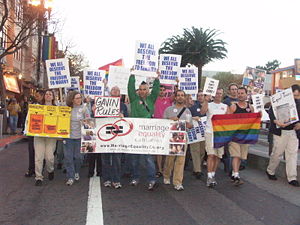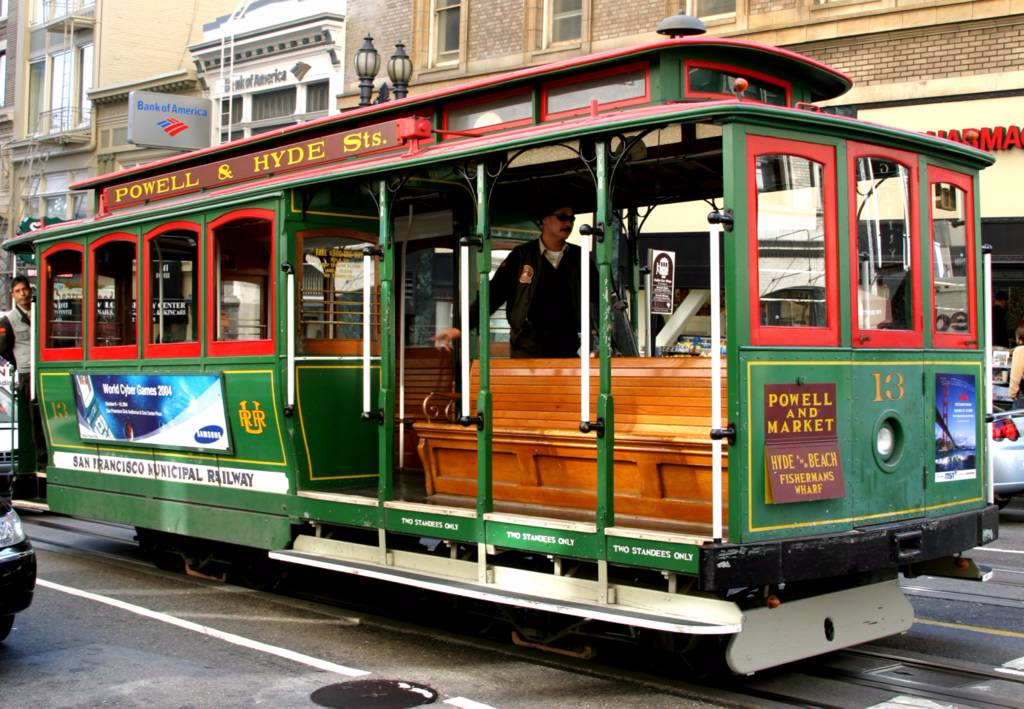San Francisco Bay Guardian, 2002-09-04, v36-n49 - 49pge2
GUARDIAN ILLUSTRATION BY CHAD CROWE
Feeling the crunch
PG&E's whopping bills and rotten service are pushing small businesses to the brink of ruin.
By Savannah Blackwell
Steve Cornell has owned and run Brownie's Hardware store on Polk Street for nearly 30 years. Each month he knows exactly how much he's taken in from sales of items ranging from hammers to window screens. He knows exactly how much he's owed from customers who have not settled their accounts.
But only recently did he realize exactly how much his monthly Pacific Gas and Electric Co. bill has soared over the past year and a half. It's increased incrementally and is now almost twice what it was in February 2001, rising from $287.95 to $518.85. Cornell, like many other small-business owners, didn't used to pore over the telephone and utility bills; he knew he had no choice but to pay. Without the lights on, no one would wander in to browse the rows of paint cans to choose the right hue for their new apartment. But he has had a nagging sense that PG&E has been digging deeper and deeper into his pocket.
“There's just been this general feeling that it's going up and up," he told us. "And that it's going to go up again. With the recession on, this is like another nail in the coffin."
Cornell is the president of the city's Small Business Commission. At the group's Aug. 12 meeting, he and other members of the panel told a PG&E representative they weren't too pleased with the company's rate increases — or with its service.
“I'm very, very upset," Commissioner Gwen Kaplan, told us. Kaplan is the proprietor of a 16th Street company that provides bulk mail service. Ace Mailing's monthly PG&E bill has increased from $461 to $589 since early 2001. “[PG&E] has to be a responsible business and cut their profits back as well," she said. "I can't very well pass that [additional cost] on to my customers."
Since PG&E declared bankruptcy in April 2001, residents, nonprofits, and small businesses have seen their monthly bills go up an average of 40 percent. Service, on the other hand, has worsened. In fact, some businesses have had to close or are in serious financial trouble because of PG&E.
The number of San Francisco customer complaints regarding PG&E's service — rate increases, power surges and other line troubles, disputes over bills, threats of disconnection, billing errors, outages, and safety problems — has risen sharply this year over last year, according to data from the California Public Utilities Commission.
In 2001 the CPUC registered a total of 45 complaints. The highest numbers were received in October, November, and December and concerned disputes over bills, protests about deposits, work-order delays, and disconnected service.
By mid August 2002 the CPUC had already received 54 complaints, with the highest numbers occurring in January, May, and June. The bulk of those were in regard to billing disputes, though there were a few about disconnected service.
Many customers don't realize they have the option of complaining to the CPUC, whose consumer affairs representatives work with PG&E to resolve the problems. Indeed, the small-business owners interviewed for this story did not know they could contact the state agency for help.
Relief is nowhere in sight. Recent developments in PG&E's bankruptcy proceedings will result in rates staying high and possibly going higher.
On Aug. 22 the CPUC and PG&E's creditors reached an agreement on how to cover the company's debt of $13 billion — more than half of which it lost purchasing power on the spot market during the 2000–01 energy crisis. (Many consumer advocates have said this is a phony debt because PG&E Corp., its parent corporation, continued to turn over major profits in its other companies and refused to credit the utility company with those revenues; see "PG&E's Other Pocket," 1/24/01).
The agreement means the latest rate hikes would be here to stay, most likely for at least two more years. Worse U.S. District Court judge Vaughn Walker's Aug. 30 decision clearing the way for PG&E's reorganization plan to override that of the CPUC and the company's creditors likely means the 40 percent rate hike will remain. The CPUC is appealing Walker's decision. He is expected to choose one of the plans in November.
PG&E is seeking approval from bankruptcy court to suck another $9 billion out of customers' pockets, according to the Utility Reform Network (TURN), a consumer organization. TURN estimates that PG&E is seeking to stick its customers with another $18 billion to both cover its debt and protect its shareholders and CEOs from the possibility of any future losses (see TURN's "Highway Robbery," at www.turn.org).
“So long as rates stay inflated, PG&E plays this game of saying the rates won't go up, but they are already inflated as it is," TURN spokesperson Mindy Spatt said. Under their bankruptcy reorganization proposal we'll be paying 5.2 cents per kilowatt hour for electricity that really costs 2.8 cents, Spatt told us. “We hear from small businesses that those electric rates are killing them."
Only recently has TURN become a cheerleader for public power. In early August its leadership decided to endorse Proposition D, the November ballot measure that would shut down the city's outdated, polluting power plants and allow the city to take over PG&E's lines if the city controller determines that doing so will not raise electricity rates (see "Powering Ahead," 8/21/02). TURN came out strongly this year for the measure, because the organization has concluded public power would provide more reasonable rates for electricity customers.
The alternative
Public power companies have a strong record of encouraging, not prohibiting small-business growth through lower rates and reliable service, according to energy experts.
For example, in Long Island, where the Long Island Power Authority took over service to 1.1 million customers in 1998, businesses aren't complaining — they're thrilled. Indeed, the public power company has been able to slash rates by 20 percent, which has resulted in a huge boon to the local economy and spared the island from as severe of a recession as the one that has hit New York City and most parts of the nation (see "The $620 Million Shakedown,” page 20).
Another accomplishment LIPA officials take pride in: during the hot summer months, when demand increased to more than 5,000 megawatts, the company still had on hand an average of 500 megawatts at any given moment. It kept the lights on and has provided good, reliable service.
Not so with PG&E.
As anyone who remembers the 1998 blackouts knows, PG&E's service is no longer dependable. And when it comes to hooking up new businesses and residential development, as well as ameliorating billing snafus, the company's record has become terrible, small-business owners say. One builder told us he has taken to cutting old wires and installing new ones himself.
“The thing about PG&E is you used to be able to count on them showing up on schedule,” said the builder, who asked not to be named. "Now it's a nightmare getting them out there.”
Joe O'Donoghue, the pro-business head of San Francisco's Residential Builders Association, told us in August 2001 that since the state moved to deregulate the energy market, PG&E's service record has tumbled.
"They had excellent field crews," O'Donoghue said. "It's when you went into the bureaucracy that it became a nightmare.... At one stage several years ago you got the hookups done free and the service was excellent; then PG&E started charging for the services. Once we started paying, the services went into the bottom of the pits. Obviously, there has been some policy change made at the very top" (see "Poor Service," 8/21/02).
PG&E did not return phone calls seeking comment.
Horror stories
PG&E horror stories are easy to collect. North Beach shop owner Robby Morgenstein of East Coast West Deli on Polk Street lost $80,000 during the nine months it took PG&E to hook up the line to his new restaurant — then the utility charged him $14,000 for the work. Hooking up power was supposed to take eight weeks, but "some guy went on vacation without submitting the project," Morgenstein told us. During that period he had to pay the rent, the insurance, and his staff (see "Poor Service," 8/22/01). Though he opened 14 months ago, he still "hasn't made a dime," Morgenstein said. After the dot-com bust and the attacks of Sept. 11, business slowed down. He wasn't able to pay his PG&E bills.
“I called them up and told them about my problem, and they threatened to take my meter," he said. "I was saying, 'Put me on a payment plan,' and they said, 'Give us $16,000 or we'll shut you down.' ”
Morgenstein reported his problem to the office of Sup. Aaron Peskin, where aide Rose Chung got him through to someone higher-up at the company who was somewhat more reasonable.
To keep the electricity on, Morgenstein forks over a $1,000 cashier's check to the utility each month — and if he misses a payment, PG&E officials told him, his service "will be gone the next day."
“I don't even like telling this story, because it's just so awful,” he said. “Even if we had had a slow opening, if we had been able to open when we were supposed to, we could have weathered it. I will literally be in the shits for five or six years because of this."
Deborah Penn, vice president of information services at the American Public Power Association, in Washington, D.C., says a publicly owned utility wouldn't dare treat Morgenstein the way PG&E did.
"Businesses like to locate in public power communities because they can work with the city on all of the issues having to do with setting up a new business," she said. "And if there's a problem, it's pretty easy to get it fixed. You can complain to the mayor or the city council, and the public power company listens. It's really hard with these huge corporations to find the right person to take issue with."
Caffe Proust on McAllister at Baker is giving up on "taking issue" with PG&E. After more than three years the celebrated restaurant and artist venue dedicated to all things Marcel Proust is closing its doors — thanks to PG&E. The company turned off the café's lights less than one week before owner P. Segal was set to throw a bash for its third anniversary July 13 (Bastille Day and Proust's birthday).
Confused and in the dark, Segal called PG&E to ask what was going on. A customer service representative informed her that since she had not paid the bill for April, PG&E had cut her service. Segal protested that she thought she had paid the bill, and at any rate, she never received a late notice.
The representative curtly informed her, "Our computer generates the notices. We didn't get them back in the mail so you got them." The only remedy? Fork over $2,000 in cash.
Segal didn't have it. Neither did her friends or partners. It would take her two weeks to come up with the money.
Undaunted, on the night of July 13, she ran an extension cord to a neighbor's house and powered the kitchen. Celebrants ate their crepe dinners by candlelight.
Even though the 200 or so guests savored the evening, Segal lost so much money during those two weeks that she can't keep the venture going.
"You can't lose two weeks of business when you're already in a cash-flow crisis," she said. (A few days after reopening, by the way, the late notice appeared.)
"Ahhh, our adventures with PG&E," Segal sighed. "The thing is, unless you have the money to just simply pay these people off, they have you over a barrel." (Segal notes that she has gotten some financial backing and is planning to reopen in a yet-to-be-named location.)
Even the San Francisco Chronicle, which has hardly been critical of PG&E, has noticed the rash of complaints. On Aug. 29, business columnist David Lazarus reported how a local resident has been hit with huge, unfair bills and can't get them corrected. On Aug. 30, he wrote that he has been flooded with calls about similar problems with the corporation.
Business groups sell out
Even though small businesses are clearly suffering under the yoke of PG&E rates and poor service, San Francisco's influential business organizations are not supporting Prop. D. The San Francisco Chamber of Commerce is opposing the initiative (see "Public Power Rolls," 8/28/02). The Small Business Network is not backing the measure either, nor is the San Francisco Planning and Urban Research Association (SPUR), a policy group funded in part by the city's corporations (see "Public Power Rolls," 8/28/02).
PG&E paid $144,275 in dues to the Chamber of Commerce last year and $12,500 to SPUR.
Carol Piasente, the chamber's vice president for communications, would only offer the standard (and easily discredited) PG&E line. "I don't think that the way Prop. D is fashioned has any guarantees that energy costs would be any lower here," she said. "It puts the city at some real risk. There is not adequate analysis of what it would cost to build and buy power plants and to maintain and run an electric system."
In fact, virtually every public power agency in northern California has lower rates than PG&E — in many cases, dramatically lower (see chart, page 21).
Ken Cleaveland, the director of governmental affairs for the Building Owners and Managers Association of San Francisco, said his group is supporting PG&E because the utility "has been good friends with the business community over the years." Although the big property owners that belong to BOMA are getting hit with huge utility bills, the organization refuses to consider public power. "We don't think the city government needs to grow at this point," Cleaveland said.
No one from the Small Business Network returned our phone calls by press time, but the network's Scott Hauge was present at the Small Business Commission's Aug. 12 meeting and defended PG&E's rate increases by saying the only remedy was for businesses to reduce their bills by conserving electricity, according to the minutes of the meeting. The Chamber of Commerce is a member of the network.
Barry Hermanson, who owns Hermanson's Employment Services in the Castro District, told us he suspects that PG&E's status as a "big player in town" is behind the major business organizations' opposition to Prop. D and the reason that many of the smaller business groups are keeping quiet — at least so far — on the issue.
Hermanson is the former president and current vice president of the Merchants of Upper Market and the Castro. He is also running for supervisor representing District Four (the Sunset) and is a supporter of Prop. D.
"The smaller associations are probably going to stay on the sidelines," he said. "Though there is clear evidence that PG&E has caused enormous economic harm to the business community and particularly to the small businesses in the city."
P.S. If you have complaints about PG&E, send them to the SFPUC, 1155 Market St., S.F., CA 94103, and to your district supervisor; send copies to us at PG&E Complaints, Bay Guardian Building, 135 Mississippi St., S.F., CA 94107, and send e-mails to pg&ecomplaints@sfbg.com.
Call the CPUC at 1-800-649-7570, send an e-mail by going to the CPUC Web site at www.cpuc.ca.gov, or write to the CPUC, Attn: Consumer Affairs, 505 Van Ness Ave., San Francisco, CA 94102.
For more information on the benefits of Prop. D go to www.powertothepeople.org.
Rachel Brahinsky contributed to this report. Systems guru James Curnow assisted in the compilation of the CPUC's data.
E-mail Savannah Blackwell at savannah@sfbg.com.







